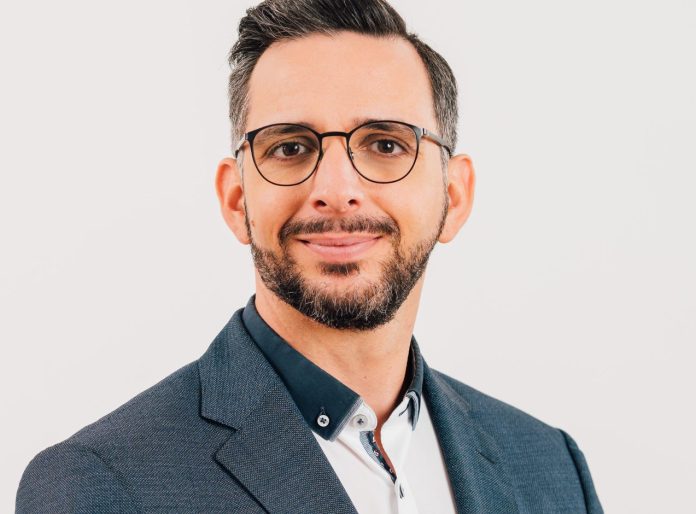In times of economic uncertainty, getting short-term sales deals closed can be so challenging that closing multi-year deals feels impossible. But that’s not to say it is. Having implemented a multi-year sales strategy that turned 80% of all deals into multi-year contracts over the past year, Sascha Ploebst, above, VP of Sales at enterprise tech Storyblok explores what he’s learnt along the way
Barely a day seems to go by without news of hiring freezes and layoffs emerging from the tech sector. From gaming to greentech, fledging startups to billion-dollar global businesses – it would appear that no tech industry is impervious as the world prepares for a possible recession. Many commentators have pointed to the tech bubble bursts of 2008 and 2000 as indicators of what might happen over the next year. The mantra at the moment seems to be, ‘prepare for the worst.’
However, this position is overly cautious. We are most probably entering a recession but how long it will last and the extent of its impact remains very much unknown. Even amongst all the doom and gloom, it’s also important to remember that this isn’t the first-time tech has weathered such a storm. Moreover, many successful tech startups were born in times of crisis. For example, Uber and Airbnb were founded during the 2008 financial crash. In this way, business leaders must focus less on fearing uncertainty and more on what they can control by proactively adapting their strategic response.
Of course, much of this will centre on effective contingency planning, adapting budgets, forecasts and goals in line with the market, and building in reserves to counter any potential hits. However, it’s also just as important to take progressive action and make the most of any potential pockets of growth. When it comes to SaaS, for example, the beauty of the sector is that a lean, resource-light business model enables ease of scale. Therefore, a golden ticket lies in the opportunity to extend each business opportunity – whether amongst new or existing clients – by netting the long-term contract.
Drawing on my own experience of having turned 80% of Storyblok’s deals into multi-year contracts and helped grow ARR by over 300% over the past year, I believe there are some fundamental steps every SaaS SME can take to help achieve this.
To begin with, it may sound obvious but it’s important to take the time to fully explain the benefits to your customers. A SaaS isn’t a commodity product, it’s usually an important extension of a business. Therefore, the reality is most software buyers will already see the SaaS they use as part of a long-term fixture. They may just not have considered the possibility of entering an extended contract.
Therefore you might be surprised to learn that simply taking the opportunity to explain the advantages of a multi-year deal can make all the difference. Procurement spends a significant amount of time, effort, and resources to review SaaS contracts every year and renegotiate with or change vendors. If vendors are changed, a lot of time is spent on knowledge transfer and vendor onboarding. Multi-year contracts help avoid all this – saving resources, efforts and time which can be used for other strategic initiatives. When suppliers are offered a multi-year contract, there is more commitment from their end, as they can feel assured that they’re on board for the long run.
Alongside this, of course, sits the importance of the right price point. Amid rising inflation and economic uncertainty, price stability is more important than ever. As leaders look to chart the predicted difficulty, they will be much more inclined to lock in a multi-year deal in order to guarantee a specific rate and avoid price volatility. The trick here is to offer an appealing discount which encourages a longer-term rate. This could be underscored with further incentives, such as additional support or a dedicated customer success manager for longer periods.
Finally, it may sound paradoxical but the most important lesson I’ve learnt is that sometimes you need to slow down to speed up. Even for a standard annual package, SaaS is a significant investment which can have a huge impact on the operational value and efficiency of a business. Throw a few more years into the mix, and it becomes a bigger strategic consideration. This means potential-buyers will need more time to weigh it up. They will also be more likely to pivot to sellers who have taken the time to listen and truly understand their requirements so that they can act as a strategic advisor to them. Here it’s about challenging the buyer, getting under the skin of the business and asking the right questions. To add further reassurance and if you have full confidence in the capability of your offering, it can also help to allow exit clauses into the contract with a specific time-frame when they can be executed (in the first 6 month of a 36 month contract fe)). In this way, a hard sell probably won’t cut it. Those who close will most likely offer a considered proposition via a mutual understanding – something which takes time but is likely to lead to fewer objectives and convert quicker.
Closing multi-year deals takes focus and engagement. It requires vendors to listen and adapt to their customers’ specific challenges and needs, and form a partnership built on trust. While certainly not an easy feat and it is most certainly, as I can vouch for, a possible one, and a tactic I would urge all SaaS SMEs to keep in their armoury for the chapter ahead.


